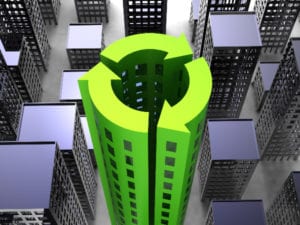As the world embarks on the 2021 United Nations Climate Change Conference (COP26) currently taking place, measures to minimise greenhouse gas emissions are in the spotlight.
The South African National Energy Development Institute has placed emphasis on the decarbonisation of commercial buildings. The built environment is responsible for approximately 40% of global carbon emissions – and the operation of these buildings contribute upwards of 28% of the world’s energy consumption. With climate change at the forefront of current international discussions, and considering South Africa’s large carbon footprint, it is important to prioritise local efforts towards more sustainable energy consumption in buildings. This is the view of Barry Bredenkamp, General Manager: Energy Efficiency & Corporate Communications at SANEDI. “The International Energy Agency predicts that two-thirds of buildings which exist today will still exist in 2040. If we don’t improve the energy performance of our buildings with urgency, we will only drift further away from the Paris Agreement 1.5°C temperature rise cap target,” says Bredenkamp. The Paris Agreement is an international treaty signed by almost all countries in the world at COP21. This agreement aims to limit global warming to just a 1.5°C increase in the medium term.“In South Africa, there is a progressive regulation relating to building energy usage, which should be inspiring greater action towards more energy-efficient buildings and mitigating climate change,” explains Bredenkamp.
In December 2020, the Department of Mineral Resources and Energy (DMRE) passed into law the ‘Regulations for the Mandatory Display and Submission of Energy Performance Certificates (EPC) for Buildings’. Certain classes of buildings in South Africa have until December 2022 to have their building energy performance assessed by an accredited party, who will then issue an EPC that rates the building from A – G for energy efficiency. The EPC must be displayed at the building entrance. “It has been almost a year since the gazetting of the regulations, and we have seen early adopters taking initiative and getting their houses in order. We have seen EPCs issued to commercial buildings across the country and we must applaud these visionaries for committing to the climate change agenda and achieving compliance ahead of the pack,” says Bredenkamp. The regulations apply to non-residential buildings with a net floor area of at least 2000 m2 in the private sector, and 1000 m2 for buildings owned, operated, or occupied by an organ of the state “However, with just a year to go until the EPC compliance deadline, we need to see a sharp rise in building energy auditing activities. We hope that COP26 discussions will inspire South Africans towards getting their buildings assessed and compliant with the new regulations. The decarbonisation of buildings is a topic on the COP26 agenda on 4 November and is also sure to form part of wider discussions on how to achieve a net-zero emissions in the world by 2050,” says Bredenkamp. “Improving a building’s energy performance is also a smart business move. As people increasingly return to the office amid South Africa’s new relaxed Level 1 lockdown regulations, occupancy is on the rise and energy consumption will increase along with it. At the same time, South Africa is facing ever-increasing electricity prices and load-shedding due the demand for energy exceeding the available supply, posing a constant threat. A more energy-efficient building is not only better for the environment and more comfortable for the people who occupy the buildings, but comes with the benefit of a decreased electricity bill. This is a win-win situation, and we call on our local building owners to come to the party with the EPC regulations,” concludes Bredenkamp.







